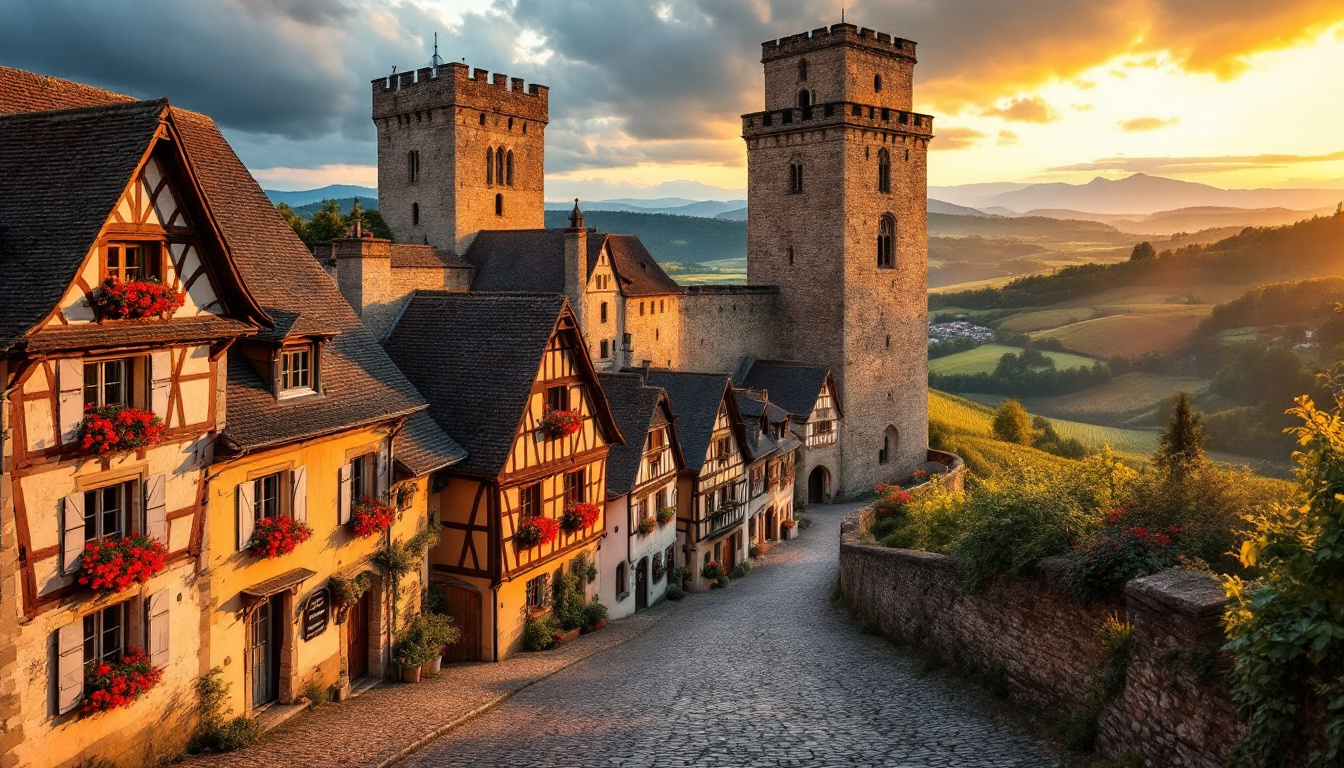Hidden in eastern France, Châtenois offers the quintessential Alsatian experience without the crowds of more famous neighbors. This fortified village, positioned strategically along the renowned Alsace Wine Route, combines medieval architecture, vineyard landscapes, and authentic local culture into one enchanting destination that most tourists overlook.
A history written in stone walls
Dating back to 912 AD, Châtenois boasts a rich history visible in its impressive double medieval wall system. The town’s remarkable fortifications from the 13th and 15th centuries remain largely intact, offering visitors a genuine glimpse into medieval defensive architecture rarely seen in such preservation.
The imposing Tour des Sorcières (Witches’ Tower), a Gothic gate tower from the 15th century, stands as a testament to the village’s tumultuous past. During the devastating Thirty Years’ War, Châtenois lost an astonishing 80% of its population – a historical tragedy that paradoxically helped preserve its medieval character through limited development.
“Our walls tell stories that span centuries. Each stone has witnessed the transformation from medieval fortress to peaceful wine village,” explains local historian Marie Dubois.
Wine traditions that flow through generations
Surrounded by meticulously maintained vineyards, Châtenois sits proudly on the Alsace Wine Route, one of France’s most celebrated viticultural regions. The village and nearby Dontenville offer intimate wine tastings where visitors can sample Riesling, Gewürztraminer, and Pinot Gris varieties that benefit from the unique microclimate at the foothills of the Vosges mountains.
Unlike the commercial experiences found in larger towns, Châtenois wineries often welcome guests into family cellars where techniques have remained unchanged for generations. These personal encounters provide deeper insights into Alsatian wine culture than possible in more touristed areas.
Architectural treasures beyond the walls
The 18th-century Church of St. Georges represents another architectural highlight, housing one of the region’s famed Silbermann organs. These exceptional instruments, created by the legendary Silbermann family, are considered masterpieces of baroque craftsmanship and attract music enthusiasts from across Europe.
Wandering through narrow streets reveals traditional half-timbered houses adorned with vibrant geranium-filled window boxes. These quintessential Alsatian homes, with their distinctive wooden frameworks, create a fairytale atmosphere that feels increasingly rare in more developed tourist destinations.
A strategic base for Alsatian adventures
Positioned just 3 kilometers from Sélestat, Châtenois serves as an ideal hub for exploring the broader region. The medieval Château du Haut-Kœnigsbourg looms nearby, while the Christmas markets of Colmar and Riquewihr are easily accessible during winter months.
“Visitors who stay in Châtenois experience authentic Alsace. They enjoy our festivals without fighting crowds, taste wines directly with vintners, and wake up to vineyard views rather than tourist buses,” notes local innkeeper Jean Bertrand.
Seasonal rhythms of a living village
From May through December, Châtenois comes alive with outdoor festivals celebrating local culture and viticulture. These events provide windows into authentic Alsatian traditions that larger destinations often lose to commercialization. The annual “Fête des Remparts” in June transforms the medieval walls into lively celebration venues.
Winter brings different charms, as the village provides easy access to the region’s legendary Christmas markets without the overwhelming crowds found in more popular tourist centers. The countryside dusted with snow creates a peaceful winter wonderland reminiscent of bygone eras.
Practical considerations
While Châtenois lacks its own train station, regular shuttle services connect with nearby Sélestat station, integrating seamlessly with regional train schedules. This accessibility makes it possible to experience authentic village life while maintaining connections to major transportation networks.
For those seeking immersion in genuine Alsatian culture without sacrificing comfort or convenience, Châtenois offers the perfect balance. Like other hidden gems worldwide, its charm lies in the authentic experiences impossible to find in more touristed destinations.
Combine vineyard explorations, medieval architecture, and local gastronomy with easy access to regional highlights, and you’ll discover why travelers seeking the genuine Alsace increasingly choose Châtenois as their base for exploring this captivating corner of France.
